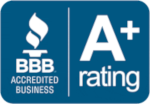Resources
Call us today
Date Last Updated: 28th November 2023
BC Hydro Request for Customer Load Data
Access your building’s usage history
Electrical data your contractor will need
There are a few key data points Storm Electric will use to see if your building, strata, or property can support the electrical load required for an EV charger installation.
Electrical capacity: This is the total amount of power that your building can support, and it’s determined by the electrical infrastructure.
- Demand: The total amount of power required by all the electrical devices and appliances at the premises instantaneously at any given time.
It can vary depending on the time of day and the number of people using the building or amenities. - Peak demand: The highest rate of electricity use during a period of time. It’s the time of day or year when electricity consumption is at its peak, often coinciding with the most extreme temperatures of the year.
- New electrical load: This isn’t something your usage history will tell you, but your electrical contractor can help you understand this too.
It’s typically the maximum draw that the new appliance or equipment and its electrical infrastructure will require to safely provide the results you want.
Storm Electric will review the data to see if there’s enough available capacity to support the new electrical load. If not, you may need infrastructure upgrades, which come at a cost.
How to access your building, strata, or facility’s data
For individual homes, or commercial buildings serviced by a single account
Residential or commercial customers can access their historical usage data in MyHydro on the BC Hydro website.
Simply log in to MyHydro, then:
- Select “View detailed consumption” to view recent or annual data.
- Or, select “Data download centre” to view more detailed data.
For an entire multi-unit building or set of buildings managed by several owners
To get electrical load data for a building with multiple owners, submit a building data request form online. Once processed, BC Hydro will send you a
report with the requested data.
You’ll need:
- A list of service addresses or BC Hydro account numbers
- The time period you need data for, typically the past 12 months
- If you would like Storm Electric to access this data on your behalf, the account holder will need to fill out a third party authorization form giving Storm Electric consent to request this data.
What to expect after you submit your request:
- BC Hydro can process most requests within five business days. If it’ll take longer, they will contact you.
- You’ll receive a report (.xls format) that shows the building’s electricity use data for the specified time period, down to the shortest time interval available for the account type.
- If demand and power factor are measured for the address, it will be included.
- If possible, BC Hydro will include a summary for you or your contractor.
Permission and privacy
BC Hydro provides customers with the information they need to make informed energy decisions, while also ensuring the account holder’s information is protected from unauthorized access. BC Hydro may ask authentication questions or request proof that a contractor/consultant is working on behalf of a BC Hydro customer.
How to interpret the data
Here’s what you’ll see in the report, and what it means.
kWh: BC Hydro meters measure electrical energy in kilowatt-hours (kWh). One kWh is equivalent to 1,000 watts consumed for one hour.
Demand: Demand is the rate at which electricity is used and is typically measured in kilowatts (kW). It represents the total amount of electricity used during the time interval to power everything associated with the meter. Demand is not measured for residential meters.
One-hour intervals: For residential and small commercial meters, kWh consumption is usually presented in either one-hour intervals (the shortest interval available for these meters), or for the duration of the billing period.
Five-minute intervals: Commercial, institutional, and light-industrial may have electricity consumption presented in intervals as short as five minutes. They may also display demand and power factor.
Calculated demand: For instances where demand (or peak demand) is not provided, demand can be calculated using Technical Safety BC’s approved method.

Contact Us Today for a Free Quote
We look forward to discussing how we can professionally complete your project on time and on budget!






